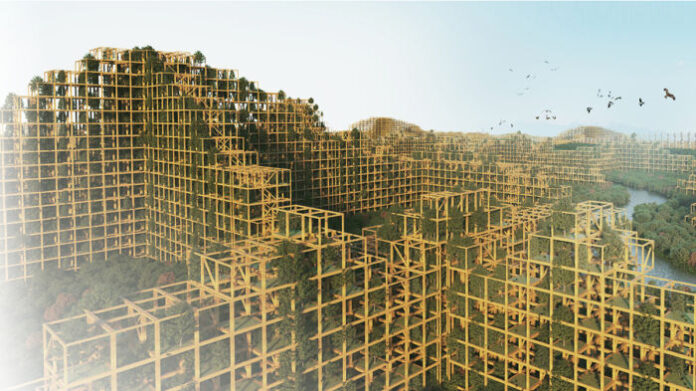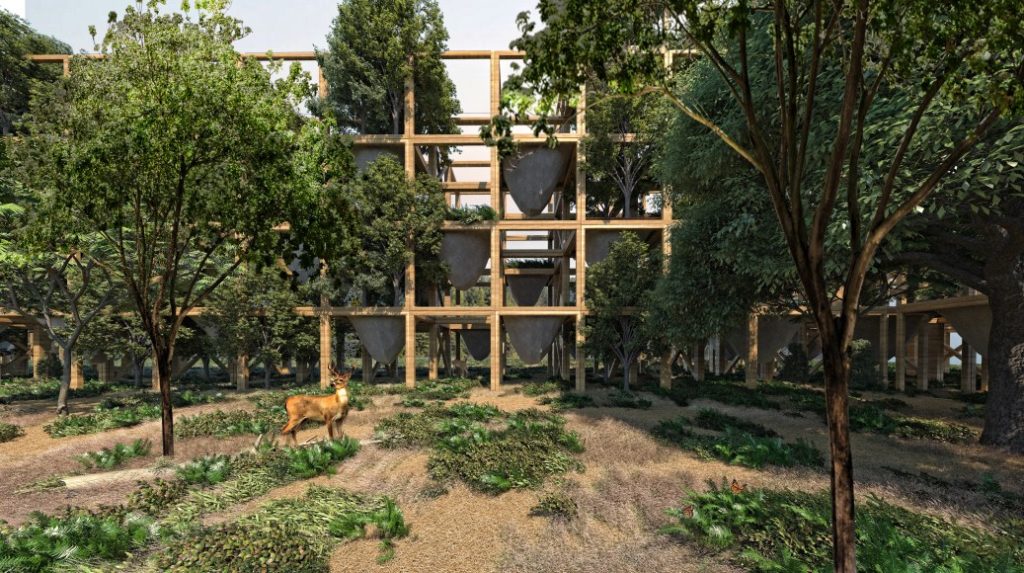
A green skyscraper to safeguard the environment and fight the negative effects of deforestation and the consequent disruption of the carbon cycle. This is the idea of a group of American architects who designed the Carbon Copy, an infrastructure of large-scale horizontal and vertical timber grids that aim to counterbalance deforestation with a taller and denser “skyforest.” This systemic solution relies on minimal human intervention and posits a new natural habitat for animals, birds, and trees while sequestering greenhouse gasses.
The concept incorporates a modular system of tree-supporting structures that extend vertically off of the forest floor using a three-dimensional grid, leaving the forest floor open for continued plant growth, animal migration, bird flight, and vehicular and human passage. Each tree is planted in a high tensile fabric pouch that contains the root ball and is secured on all four sides within 20’ x 20’ x 20’ modular timber frames. The trees are placed in a staggered pattern vertically within the structure to allow sun and rain to reach each tree.
Dattner Architects’ Carbon Copy Skyscraper received an honorable mention in eVolo Magazine’s 2019 Skyscraper Competition.

“Instead of an urban skyline populated by humans, our project proposes a new landscape of forest structures inhabited only by animals, birds and trees – the creator said – This skyforest is a systemic solution to the problem of deforestation. Built on a large-scale grid, it leaves the forest floor available for managed growth and harvesting, while duplicating the forest vertically by means of a three dimensional grid that rises high above the ground. This new skyline works with nature rather than against it”.
The modularity of the system allows for the structure to seamlessly respond to natural obstacles and changes in topography. When an obstruction on the forest floor meets the grid, it compensates for the loss of tree modules by increasing in height.
Planted as saplings, the mixed tree species will encourage biodiversity. As they grow, their falling seeds will take root in the suspended soil and eventually take over the entire structure. Both the trees and the timber structure sequester carbon dioxide that would otherwise remain in the atmosphere. Finally, natural decay will destroy the structures, which will have to be re-built, reusing the high strength tensile fabric.



































